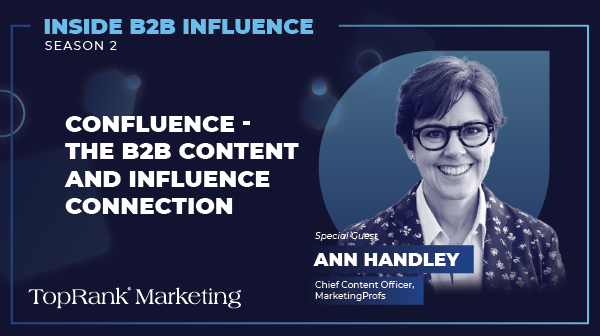How to Use Social Media Strategically in 2021 written by John Jantsch read more at Duct Tape Marketing
With half of the world’s population now on social media, it’s rare you’ll find a brand or business not using it to grow an audience, generate leads, and increase sales online.
Social media hasn’t gone away, it hasn’t died out, it has a place, and it’s here to stay, so let’s talk about how to use it in 2021.
Some of the questions that I received when social media was brand new I still get today:
- How do I find time to do it?
- What’s the ROI?
- How do I make it pay?
- Can I sell?
People still see social media as this disconnected piece of marketing that you have to go figure out and play in. Just like every other facet of marketing — social media needs a strategy too.
Social media is just another channel, it is another part of marketing. So how does it fit into your overall objectives? You may actually end up realizing that you are wasting your time in a lot of what you’re doing with social media because it doesn’t help achieve your objective of growing your business or getting more clients or the things that we tend to want to do in marketing. I think a lot of people bought into, “I have to be there, I have to be in all these new places or I’ll be left behind.” In some cases, your clients aren’t there and you can’t physically participate and do well there without watering down your other efforts.
Why businesses use social media today
Let me ask you this, what’s the main reason you use social media today? My guess is, some of you are going to say, “I don’t really know,” and I think that’s probably the most honest answer. I can tell you that brand awareness and community engagement and content distribution are the biggest reasons that people use social media today. Sales, lead generation, and customer support are not far behind because those are the things that we want to do the most, but I think you have to realize that there’s a place for social media today, and you just have to understand where that is.
On the flip side, I read a statistic recently from GlobalWebIndex that 71% are more likely to purchase products and services based on a brand’s social media presence and referrals, so it does have the power to help you meet your objectives. I think the thing that has become painfully clear today that maybe wasn’t a few years ago, is that it’s really not about the tools or the platforms. It’s really all about meeting your objectives.
How to meet business objectives with social media
So how could social media meet your business objectives? Well, first you have to outline what those objectives are. Is it to get a certain number of new clients, is it to launch into a new service area? Is it to launch a brand or a new product campaign? Is it to build a community?
If you think about those as some of your objectives then you could start saying, “Okay, well how could we tie that then to marketing objectives,” because sometimes it’s very difficult to go from launching a new product to how does Twitter help us do that? If you think about some of the marketing objectives, like:
- Increasing awareness
- Driving traffic
- Re-engaging current customers
- Generating leads
- Growing revenue
- Boosting engagement
- Building community
- Social selling
- Offering support to existing customers
Those are marketing objectives that actually can be accomplished quite nicely through the right use of social media today.
Think for a minute. What would be your top three marketing objectives for 2021? Once you have those, it’s simply a matter of saying, “Okay, how could social media help me do that? Here’s a list of specific tactics that we are going to use in order to have social media accomplish those goals.”
Let’s say, you want to expand into a new market segment. Well, the strategy for that might be to use social media to discover and build relationships with influencers or brand ambassadors. Then, you could just break that down to a project. Create a list using Twitter lists or using something like BuzzSumo. Use an influencer platform like Upfluence to find people who fit your brand and manage your influencer campaigns.
Make it a plan to reach out to 10 of them a day about potential partnering. You just break it down into very specific things and just ask yourself again and again, “How can social media help me do that?” You may have noticed by now, I haven’t mentioned a single platform yet. I will actually get to that but I think that this is the element that is missing, that we don’t understand how we’re going to use it and why we’re going to use it so that we can make these proper decisions about when and where. What are some of the tactics or some of the things that you can do in social media based on the stages of the buyer’s journey?
For example, for our stages, I talk about the Marketing Hourglass; know, like, trust, try, buy, repeat, and refer. I’ll even add an eighth step to that. For a lot of companies, social media can be great for hiring as well. Paid social, paid Facebook ads, and paid LinkedIn ads can be a really great way for people to come to know you or know about your content. There’s no question that showing a personal side on a social platform is a way for somebody to identify with or like your brand.
Telling stories on social media is a great way to build trust, which is a step we need. You can make offers for certain types of businesses having a special or a sale or a holiday event as long as you are providing value and engagement in other forms. This is a very legitimate way of using social media. Doing things once somebody buys from you, like creating a Twitter video and just saying, “Hey Bob, we really appreciated working with you.” Or, “Hey Bob, here’s your finished product. We’re shipping out today.” That kind of stuff is a great use of social media to generate repeat business.
Then, there are all kinds of ways that you can use social media. Say, creating a Facebook group of your customers or your champion customers and creating something special or different or unique or custom for them. Then from a hiring standpoint, the greatest thing is most of your employees are on social media so you can use their networks, in some ways, to help recruit and maybe create some sort of formal program. If you think about using social media not as just this megaphone that gives you an audience but for your very specific marketing objectives, business objectives, and then meeting certain intent throughout the customer journey, you can develop a strategy that makes some sense.
What social media platforms you can use today
The amount of social media platforms to choose to be active on keeps increasing every year, but you don’t have to conquer them all. In fact, it’s best if you only choose the two or three that are really relevant to your business and that you can align your business objectives with.
Twitter
Twitter makes it easy to distribute your content. And, there are over 326 million average monthly Twitter users globally for you to share that content with.
There are a ton of reasons to choose to use Twitter as one of your social media channels. It’s free to use, it allows you to offer quick customer service and support, it can be used as a search engine tool for competitive analysis and for prospects to learn more about your business, and it allows you to directly communicate with your audience.
Facebook
Facebook is a place for audiences to connect with businesses big and small. In fact, two-thirds of Facebook users report visiting a local business Facebook Page at least once a week. Facebook also offers in-depth paid ads and highly-customizable targeting features.
The social media platform has launched features similar to Instagram like Facebook live and Facebook stories. These are great features to educate and communicate with your audience on Facebook.
LinkedIn
As one of the most important B2B social media platforms, LinkedIn is a channel that can help you attract more eyes on your business. LinkedIn is one of the most popular social networks for professionals and entrepreneurs. You can use the platform to showcase your business in multiple ways – if you are the face of your business, having a personal presence is important. You can also create a showcase page for your business and distribute content there as well.
Instagram
Instagram marketing is competitive, but not impossible. Instagram offers a massive reach for brands with an advertising audience of more than 1.16 billion people – coming in at the third largest social media platform.
Today, 90% of Instagram users follow at least one business. And it isn’t only consumer products that benefit from having a presence on Instagram. More than 36% of B2B decision-makers use Instagram when researching new products or services. This makes Instagram a great channel to showcase the products or services your business has to offer
Clubhouse
Clubhouse is a relatively new social media platform focused on live audio. As a business owner or marketer, Clubhouse offers some unique advantages that make it worth considering. You can learn about your audience’s concerns and desires directly from them. It’s as close to a real-life conversation as you’re going to get on a virtual platform.
On Clubhouse, you don’t have to chase down your target market every time you log on. Your audience is already there and they want to engage in a conversation with you. Because of the real-time nature of the content and the ease of bringing people into the discussion, it allows you to have meaningful conversations and build know, like, and trust with your audience.
TikTok
TikTok is a video-sharing social network with over 800 million monthly active users and an average daily view time of 52 minutes. Right now, TikTok is experiencing a period of exponential growth which means there’s a huge audience ready to be tapped into. Brands who’ve successfully pivoted to TikTok early have reaped huge brand awareness rewards, often with very little investment.
Creating viral content on TikTok is much more attainable than it is on a platform like Facebook or Instagram. The video-sharing platform has a huge trend culture, but there are trends in every niche making it possible for your business to shine within yours.
How I approach social for my business and myself
I’m going to wrap things up by just talking about a couple things that I’m doing. People, for some reason, like to know what tools I’m using or what platforms I’m using. I will say, for a marketing consulting business like mine today, we are focused primarily on Facebook and Instagram. We certainly participate in LinkedIn, but Facebook and Instagram are the ones that we spend more time on because we feel like we can get the best type of engagement. We have limited resources so we want to go deeper in a couple places.
With the days of auto-publishing everything and going out and curating hundreds of posts, and making sure that you’re posting three times a day, Facebook has basically said, “We don’t want that. We don’t think that’s worth very much. If you do that we’re not going to show your content to very many people.”
Really, the approach that we have taken in Facebook is we want to promote on the business page. I have a personal page and a business page and those two both serve a business function for me. The personal page is more on the personal side of John Jantsch, the author, where the business page is meant to be more straight up Duct Tape Marketing stuff. Now, there’s some crossover upon occasion but that’s how we try to split it up. Now, as far as content goes, about 30% of the content is our ongoing content, the content that we’re producing on a daily and weekly basis.
About 25% is curated content from other sources, 25% is straight up business goals so we’ll promote a product, a new podcast episode, a webinar, an event that I’m doing that I want people to take advantage of because they may opt-in. It’s straight up business goals that we’re trying to meet. We will boost or advertise most of the content. Then, we like to look at, say, another 25% is about people, and culture, and personal observation. We round that out with our ongoing content that is on our editorial calendar. A fourth is curated from other sources, a fourth is aimed at meeting our business goals, and about a fourth is just people, culture, goofy stuff. That’s the mix that we like to go with on Facebook right now. That seems to be a good mix to create engagement and to create views, and to create comments. Then, we put routine or consistent advertising into Facebook as well, primarily as the two categories of our own ongoing content and of the content that supports our business goals.
As far as Instagram goes, Instagram recently introduced a business page type of account. You get some more insights and you get access to the advertising platform. I was on Instagram very, very early on and so I had an account that I just called Duct Tape Marketing. I used it as much as anything as a personal account but it had the Duct Tape brand.
I converted that to a business page and then I created a new page, John Jantsch, that I am sharing my primarily personal rambling of travel pictures and things of that nature and then sticking with promoting things much like we do with our Facebook content on Instagram on the business page. I recommend that you look into creating an Instagram business page if that is a platform for you.
Tools to consider using to amplify your social media strategy
As far as tools go for social media scheduling and management, I am and have been for many, many years a big fan of Buffer. A new social scheduling tool I’ve recently been testing out is MissingLtr – the platform offers quite a few more features than Buffer like advanced performance analytics, content curation, and more. However, I find myself actually publishing directly on the platforms a lot more now. It’s not maybe as efficient but I think you get the most bang for your buck.
Facebook seems to like you to do that, especially if it’s videos or native videos or native photos that you’ve uploaded from your computer. Those seem to get shown more than anything else. Facebook and Twitter actually have some pretty good insights. Now, when you go over to the business side on Instagram you’ll actually get some analytics there. Really, from an engagement standpoint, either Buffer or MissingLtr are really great tools to monitor and respond to things of that nature.
A couple of tools that I often use for content creation are Canva and Headliner. Canva has tons of different templates you can use to create clean, unique graphics for Instagram to promote something like a new blog article or an upcoming webinar. Headliner allows you to easily create videos to promote things like a new podcast episode or blog article.
That’s kind of my take on where we are in social media. It’s all still about meeting objectives, both business and marketing objectives, and looking at the platforms that really allow you to do that. Again, I think half of these tools that are out there will do most of what you want and so it’s a matter of making a determination about the business objectives and marketing objectives you’re trying to meet. Just set up campaigns, set up tactics that are based on your strategy and you will ultimately win.
Answer this one question if you’re trying to make a decision about social media today: is the use of this tool or this practice or this tactic going to benefit my customers? I think if you can say “yes” to that, then you will always find a return on investment.
from Duct Tape Marketing https://ift.tt/3xIQNR2
via
IFTTT



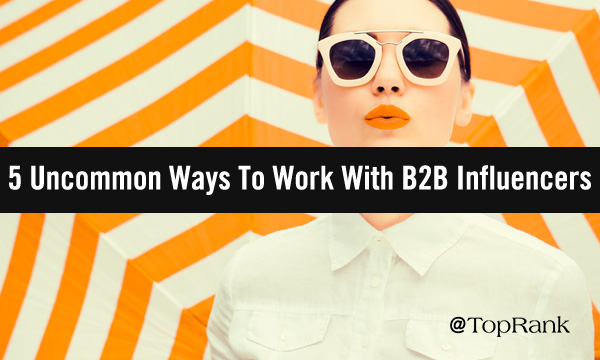

 For
For  B2B influencer marketing continues to evolve, and SMEs in some industries aren’t always going to be found solely on the traditional social media platforms of LinkedIn*, Twitter, Facebook, and Instagram. Many industries have attracted an infusion of newly-minted marketing professionals, and the SMEs they consider influential may frequent an entirely different set of online communication platforms, which could be any of the following or others:
B2B influencer marketing continues to evolve, and SMEs in some industries aren’t always going to be found solely on the traditional social media platforms of LinkedIn*, Twitter, Facebook, and Instagram. Many industries have attracted an infusion of newly-minted marketing professionals, and the SMEs they consider influential may frequent an entirely different set of online communication platforms, which could be any of the following or others:
 Perhaps even more than in B2C marketing, B2B influencers have increasingly formed mostly private groups that serve as communication tools for refining and driving the long-term success of influencer marketing. Sometimes driving industry knowledge and empowering influencers are also tackled by more public groups, such as the popular Adobe Insiders program. “Working with a small group of influencers can be a great place to start, but that small group should be backed by a much larger list of researched candidate influencers. As relationships develop through the course of different collaborations, B2B marketers will refine and find the right influencers. A VIP group of influencers might be created as Adobe has with its 60+ Adobe Insiders being activated at individual, small group or large group levels depending on the situation,” our CEO and co-founder
Perhaps even more than in B2C marketing, B2B influencers have increasingly formed mostly private groups that serve as communication tools for refining and driving the long-term success of influencer marketing. Sometimes driving industry knowledge and empowering influencers are also tackled by more public groups, such as the popular Adobe Insiders program. “Working with a small group of influencers can be a great place to start, but that small group should be backed by a much larger list of researched candidate influencers. As relationships develop through the course of different collaborations, B2B marketers will refine and find the right influencers. A VIP group of influencers might be created as Adobe has with its 60+ Adobe Insiders being activated at individual, small group or large group levels depending on the situation,” our CEO and co-founder  By mentoring the next generations of marketing influencers, you’ll not only help new SMEs develop, but also continue your own lifelong learning. Influencer marketing is a two-way street when it comes to mentoring opportunities. “I think it’s really important that people seek out a person who is going to be a champion for them if they want to advance and grow their career,”
By mentoring the next generations of marketing influencers, you’ll not only help new SMEs develop, but also continue your own lifelong learning. Influencer marketing is a two-way street when it comes to mentoring opportunities. “I think it’s really important that people seek out a person who is going to be a champion for them if they want to advance and grow their career,”  In this episode of the
In this episode of the  This episode of the Duct Tape Marketing Podcast is brought to you by Duct Tape Marketing Consultant Network.
This episode of the Duct Tape Marketing Podcast is brought to you by Duct Tape Marketing Consultant Network.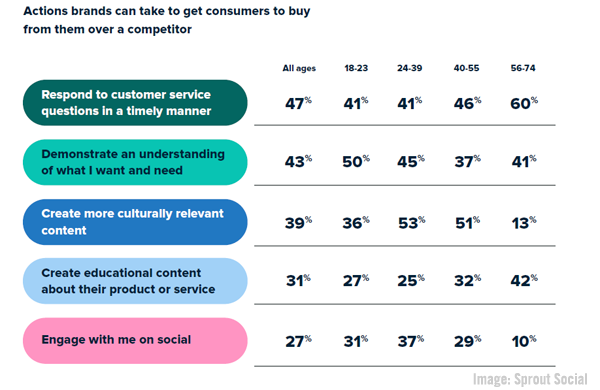
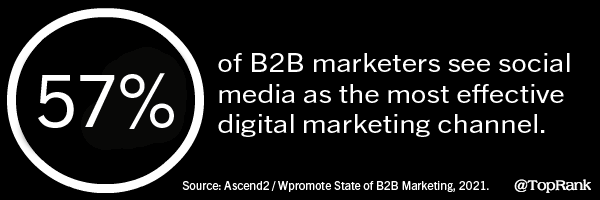 2021 State of B2B Digital Marketing [Report] The number one digital marketing trend B2B brands are prioritizing is the utilization of new social platforms, while 57 percent of marketers said that social media was seen as the area of digital customer experience that had the most impact on overall strategic success, according to newly-released B2B digital marketing report data.
2021 State of B2B Digital Marketing [Report] The number one digital marketing trend B2B brands are prioritizing is the utilization of new social platforms, while 57 percent of marketers said that social media was seen as the area of digital customer experience that had the most impact on overall strategic success, according to newly-released B2B digital marketing report data. 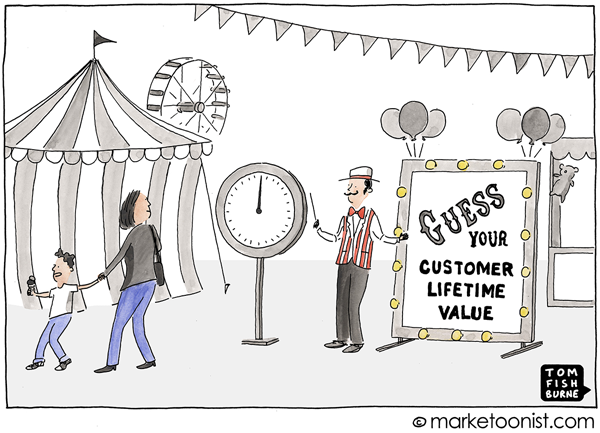 A lighthearted look at the “customer lifetime value” by Marketoonist Tom Fishburne —
A lighthearted look at the “customer lifetime value” by Marketoonist Tom Fishburne — 

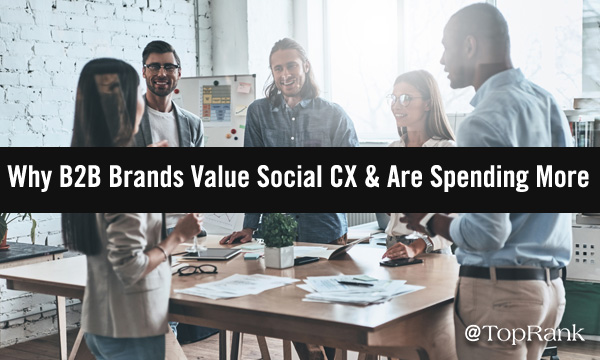
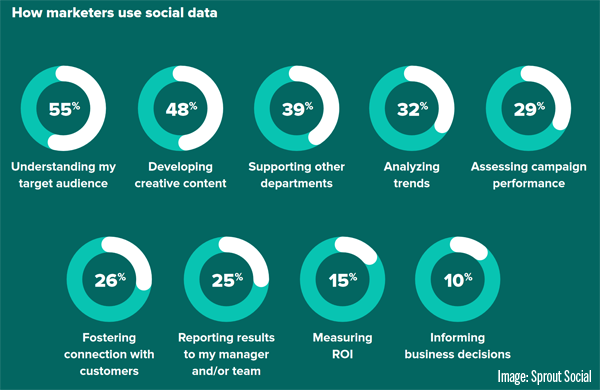 “88 percent of marketers agree their social strategy positively influences their bottom line,” the research concludes. The value of social data has generally increased over time, and the new Sprout Social study bears this out, revealing that 47 percent of marketers consider social a resource that influences strategy for multiple organizational teams, while 46 still see it as strictly a marketing resource, with eight percent viewing it as an organization-wide resource for business intelligence. Something as seemingly simple as responding quickly to customer questions can be very important in brand purchase decisions. 47 percent of consumers said that responding to customer service questions in a timely manner was the top way brands could get them to buy and forgo competitors. Nearly as important among consumers were brands that demonstrate an understanding of what consumers want and need. “Nine out of 10 consumers will buy from brands they follow on social, while 86% will choose that brand over a competitor,” the Sprout Social report data showed. Given the importance customers place on speedy response times from brands, it’s easy to see how the new Sprout Social data indicated that “78 percent of consumers agree that social media is the fastest and most direct way to connect with a brand — and consumers want their voices heard.” When it comes to sharing feedback about a product or service, after social media, consumers turn to e-mail and a brand’s website (18 percent for each), followed closely by review websites, and just 11 percent prefer calling a brand’s customer service phone number, according to the report data. Even for reaching brands about customer service issues or questions, most consumers (33 percent) prefer social media, followed by customer service (24 percent), e-mail (23 percent), and just nine percent prefer using a company’s website for such questions.
“88 percent of marketers agree their social strategy positively influences their bottom line,” the research concludes. The value of social data has generally increased over time, and the new Sprout Social study bears this out, revealing that 47 percent of marketers consider social a resource that influences strategy for multiple organizational teams, while 46 still see it as strictly a marketing resource, with eight percent viewing it as an organization-wide resource for business intelligence. Something as seemingly simple as responding quickly to customer questions can be very important in brand purchase decisions. 47 percent of consumers said that responding to customer service questions in a timely manner was the top way brands could get them to buy and forgo competitors. Nearly as important among consumers were brands that demonstrate an understanding of what consumers want and need. “Nine out of 10 consumers will buy from brands they follow on social, while 86% will choose that brand over a competitor,” the Sprout Social report data showed. Given the importance customers place on speedy response times from brands, it’s easy to see how the new Sprout Social data indicated that “78 percent of consumers agree that social media is the fastest and most direct way to connect with a brand — and consumers want their voices heard.” When it comes to sharing feedback about a product or service, after social media, consumers turn to e-mail and a brand’s website (18 percent for each), followed closely by review websites, and just 11 percent prefer calling a brand’s customer service phone number, according to the report data. Even for reaching brands about customer service issues or questions, most consumers (33 percent) prefer social media, followed by customer service (24 percent), e-mail (23 percent), and just nine percent prefer using a company’s website for such questions. 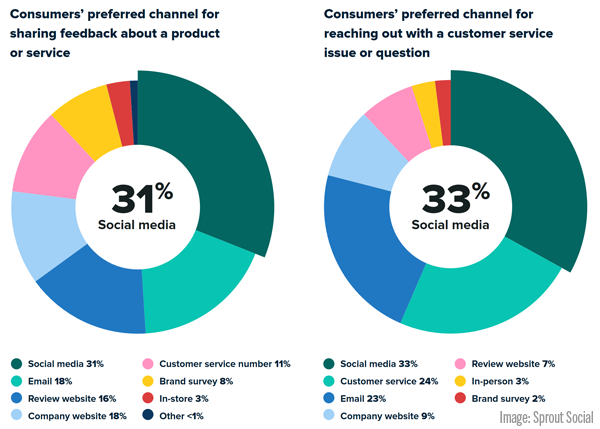 “44 percent of consumers will unfollow a brand on social because of poor service, putting a damper on brands’ growth goals,” the report warned. The Sprout Social study surfaces a fascinating distinction between what consumers and marketers believe makes for best-in-class social media performance. The most important factor among consumers — at 47 percent — was brands that offer strong customer service, while that was only the sixth most important factor to marketers, at 35 percent.
“44 percent of consumers will unfollow a brand on social because of poor service, putting a damper on brands’ growth goals,” the report warned. The Sprout Social study surfaces a fascinating distinction between what consumers and marketers believe makes for best-in-class social media performance. The most important factor among consumers — at 47 percent — was brands that offer strong customer service, while that was only the sixth most important factor to marketers, at 35 percent.
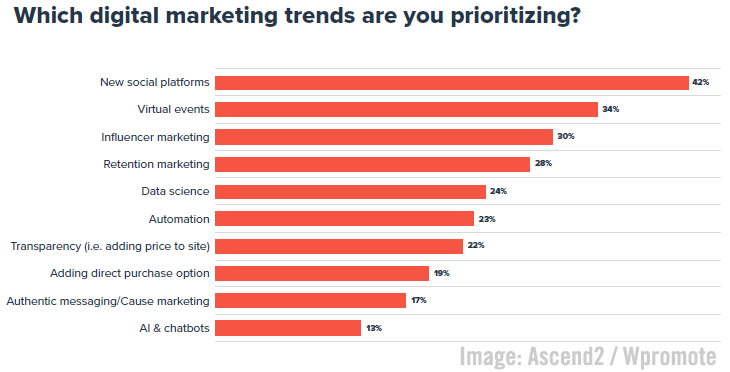 “Brands embraced new social platforms, virtual events, and influencer marketing strategies that can open the door to new opportunities to drive brand awareness and grow new audiences,” the report suggested. A robust 68 percent of B2B marketers said they expected their digital marketing budgets to increase during the forthcoming year, with 26 percent seeing a significant budget increase ahead, according to the report data. When it comes to driving revenue, 57 percent of B2B marketers saw social media as the most effective digital marketing channel, followed by content marketing and email, each at 47 percent. Reinforcing the notion supported by the other research we’ve examined, the Ascend2 and Wpromote data showed that social media was the area of digital customer experience that had the most impact on overall strategic success, according to 57 percent of respondents — ahead of website optimization’s 47 percent and paid advertising’s 42 percent. “Whatever social platforms you use as a B2B marketer, if you prioritize the time and resources to add new social platforms to your mix, you increase the opportunity to build new audiences and further engage with your existing audience,"
“Brands embraced new social platforms, virtual events, and influencer marketing strategies that can open the door to new opportunities to drive brand awareness and grow new audiences,” the report suggested. A robust 68 percent of B2B marketers said they expected their digital marketing budgets to increase during the forthcoming year, with 26 percent seeing a significant budget increase ahead, according to the report data. When it comes to driving revenue, 57 percent of B2B marketers saw social media as the most effective digital marketing channel, followed by content marketing and email, each at 47 percent. Reinforcing the notion supported by the other research we’ve examined, the Ascend2 and Wpromote data showed that social media was the area of digital customer experience that had the most impact on overall strategic success, according to 57 percent of respondents — ahead of website optimization’s 47 percent and paid advertising’s 42 percent. “Whatever social platforms you use as a B2B marketer, if you prioritize the time and resources to add new social platforms to your mix, you increase the opportunity to build new audiences and further engage with your existing audience," 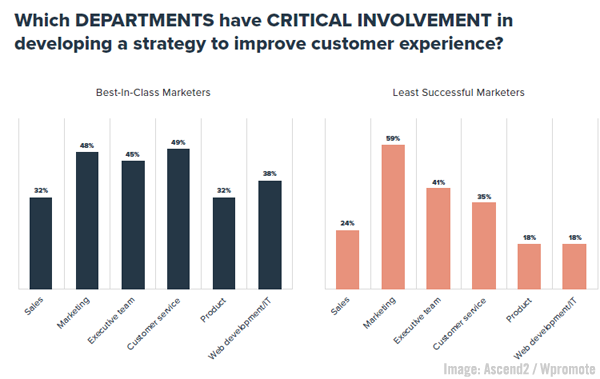 Bringing many of these trends and tactics together, account-based marketing (ABM) — or even account based experiences (ABX), as our CEO
Bringing many of these trends and tactics together, account-based marketing (ABM) — or even account based experiences (ABX), as our CEO 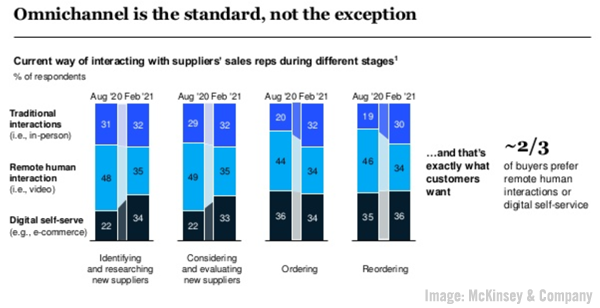 LinkedIn's*
LinkedIn's* 